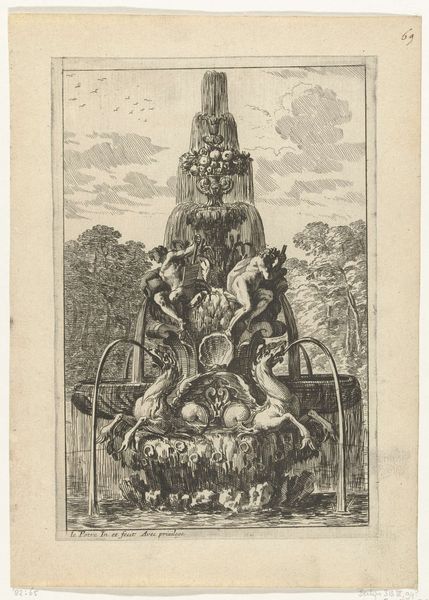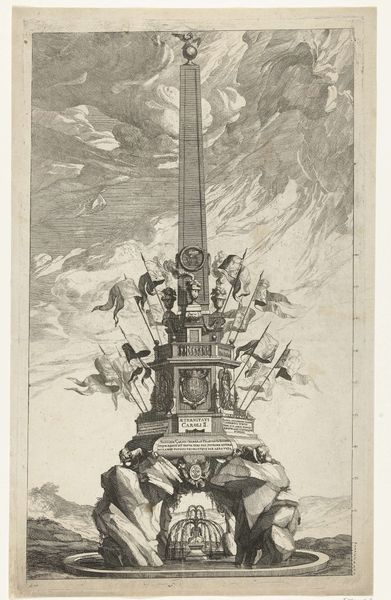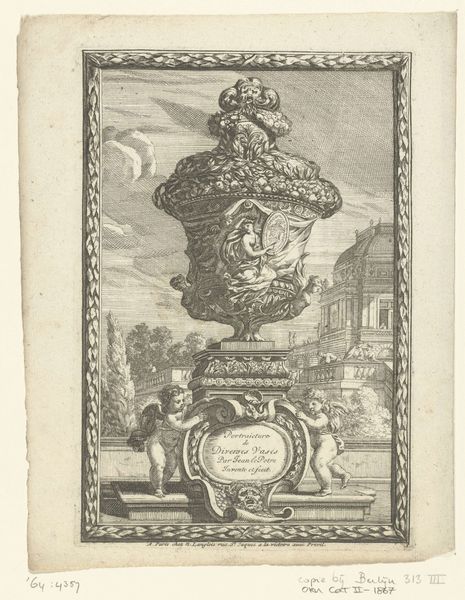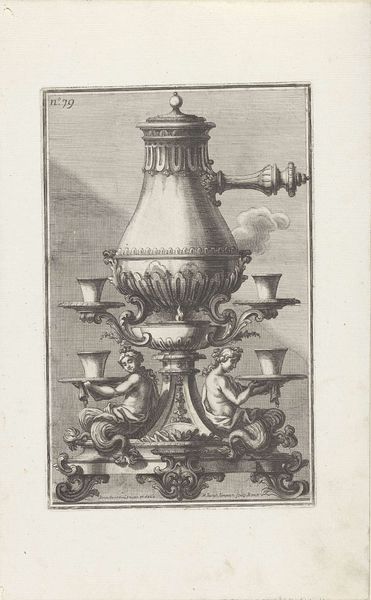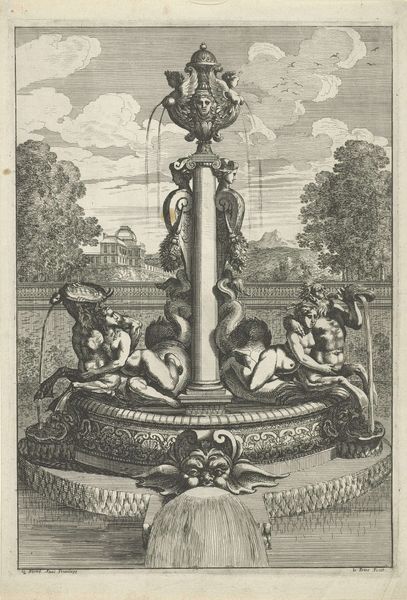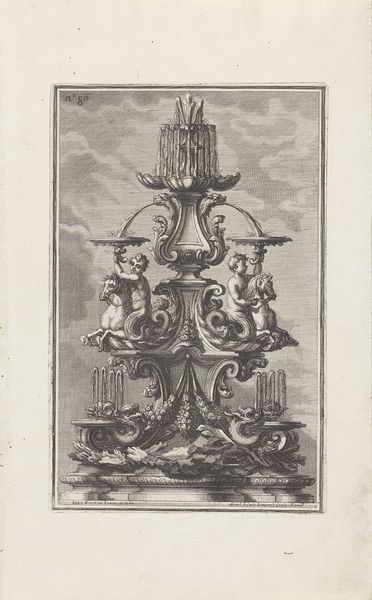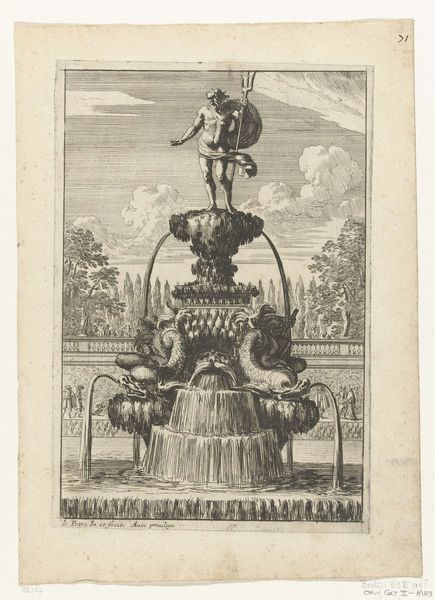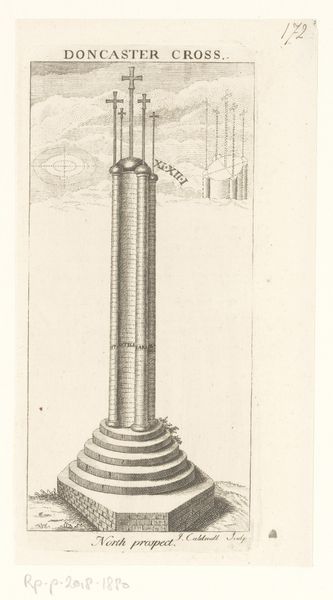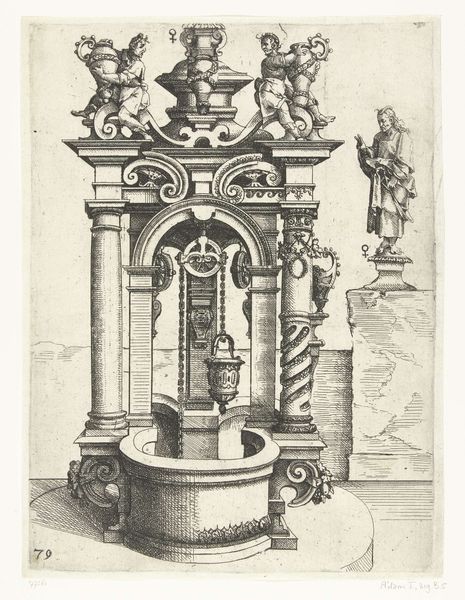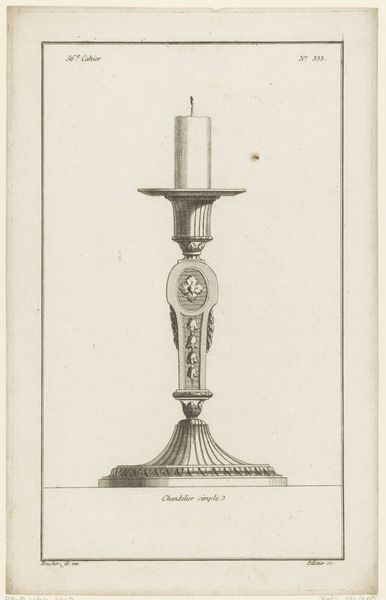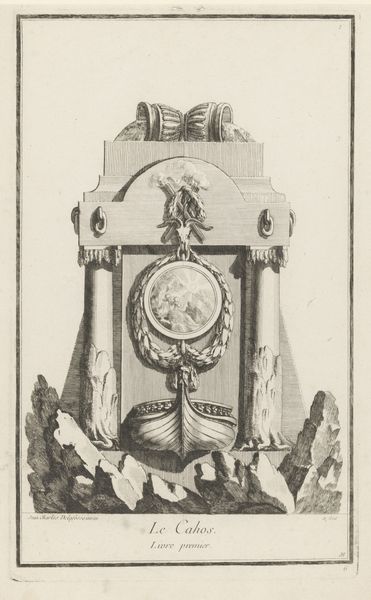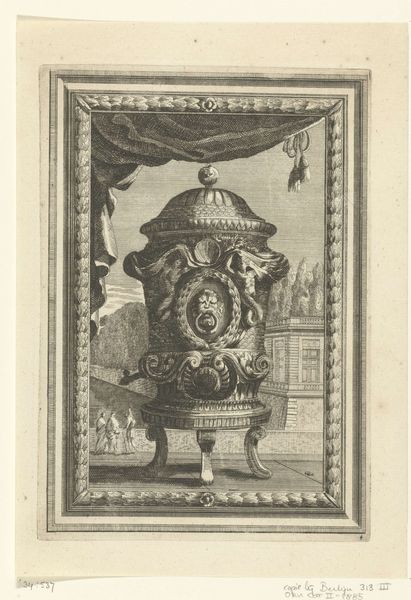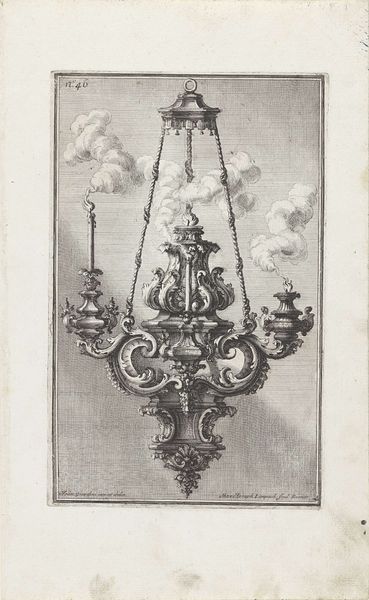
print, engraving
#
baroque
# print
#
landscape
#
form
#
line
#
cityscape
#
history-painting
#
decorative-art
#
engraving
#
realism
Dimensions: height 230 mm, width 155 mm
Copyright: Rijks Museum: Open Domain
Editor: This is "Fontein in bassin," a print made before 1682 by Jean Lepautre, housed here at the Rijksmuseum. The details are so precise! It looks so controlled, yet overflowing with life. I’m struck by how the artist captures movement within such a rigid structure. What stands out to you when you look at it? Curator: The fountain becomes an emblem. Lepautre wasn’t just depicting a fountain; he was encoding a symbolic language understood by his contemporaries. Do you see how the cascading water isn't merely decorative but a visual representation of abundance, power, and even purification? Consider the formal garden, an expression of human control over nature. It speaks volumes about societal values. Editor: I see that, and I hadn't noticed the faces worked into the decorations until now! Are they supposed to be anyone specific? Curator: Likely allegorical figures. Faces and figures integrated into decorative structures like this tap into cultural memory. We read into their placement, the expressions, the symbolic weight each figure carries within the context of baroque aesthetics and courtly life. Each line seems to tell a different story or reinforce a certain ideal. What emotions do these symbols stir in you? Editor: Intrigue, definitely. I hadn't thought about prints carrying so much embedded meaning! It felt simply decorative at first glance, but now, I see there's a whole system of symbols at work. Curator: Exactly! It is more than a decorative rendering; it's a potent reminder of how images shape our understanding and embody a period's aspirations. Editor: I'll never look at decorative art the same way. I see the layers now!
Comments
No comments
Be the first to comment and join the conversation on the ultimate creative platform.
